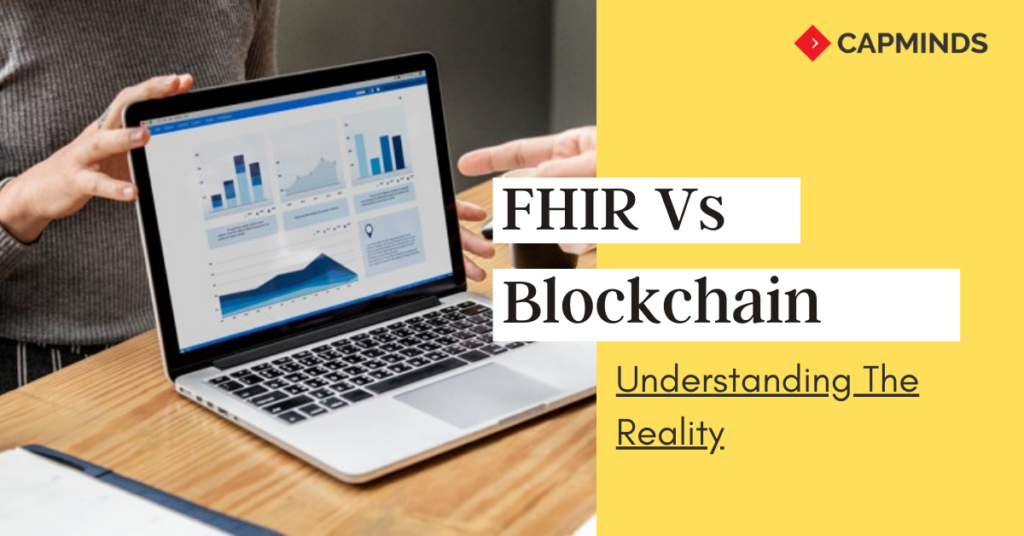FHIR Vs Blockchain:Understanding The Reality
In today’s digital world, health data management remains to be one of the ongoing challenges worldwide. The healthcare data transmission has lagged behind the trend due to its complexity and sensitivity. This limits the healthcare providers’ ability to coordinate care, perform data analytics, and cost-effectively integrate IT environments.
The question now becomes which places on the top in terms of benefits among these two data integration systems- FHIR and blockchain. This article lets you understand the real benefits of FHIR and blockchain.
FHIR Vs Blockchain
First, we’ll discuss FHIR, Fast Healthcare Interoperability Resources, a low-cost integration standard built on advanced technologies and based on the expectations of today’s health integration layers.
The main aim of the development of FHIR is to normalize and ease out the exchange of healthcare data between healthcare providers to share patient data ease, even when the providers are using different software systems for data sharing.
Now coming to Blockchain, everyone has a question in their mind; is blockchain remains to be an effective way to support health data sharing? Of course, blockchain can facilitate the transfer of patient health records among various health systems in a secure and easy to use manner, and lift the coordination of member health management, lower transaction expenses, and even support medical tourism.
The promise is high when it comes to health integration requirements and there are numerous potential ways to look at these two technologies in terms of healthcare integration solutions. Here we have discussed some of them.
RELATED: THE MYSTERY BEHIND FHIR IN HEALTHCARE DATA SHARING
1. Performance Level
FHIR messages are conveyed quicker, having a huge advantage while conveying new data to a non-local system. Blockchain solutions have to reserve complete data locally, however, new exchanges can require some time (depending on the technology) to work through finalization and distribution.
RELATED: ROLE OF FHIR IN INTEROPERABILITY
2. Synchronizing
FHIR assists registries with synchronizing themselves yet can’t work beyond messages. Blockchain solutions can make synchronized registries in different locations.
3. Persistence
FHIR goes about as an assortment of transient messages that are liable for moving data between persistent data stores or for on-request use. Blockchain continually stores information, making it an unchanging record of data as well as the messages that transform it.
FHIR Role In Interoperability
FHIR creates a common language where advanced systems can easily connect and share data. Many of the big tech industries like Microsoft, Amazon, Google, IBM, Oracle are seeing the benefits and stated that they’ll leverage FHIR in future health technology endeavors to “unlock the potential of healthcare data, to deliver better outcomes at a lower cost.”
Apple is using FHIR to enable patients to aggregate their health records from various institutions into one centralized place in their Health app. This allows patients to bring their health information from one system to another if the health system supports Apple’s Health app.
FHIR provides data formats, and an application programming interface (API) to connect health information across different health systems and benefits healthcare institutions, physicians, app developers in the following ways.
1. Seemless data flow between healthcare organizations
2. Easy implementation
3. Provides fast healthcare delivery with secure real-time access to quality data
4. Structures data for automated clinical support
5. Reduces burden for reporting quality measures
6. Personal health information (PHI) plays a great role in care decisions. By integrating it into medical records healthcare providers can easily leverage real-time data, PHI stored in devices over time as well as information in an EHR.
RELATED: FHIR: A NEW PATH TOWARDS HEALTHCARE INTEROPERABILITY
FHIR & Blockchain Working Together
As more health systems and app developers started moving on with FHIR it will make it easier for health applications to integrate into health records. Here blockchain could take interoperability to the next greater level by creating a platform where health information can be easily connected.
When FHIR is accompanied by blockchain, you could see a more consumer-centric database. This would mean that:
No need for the vendor-specific platform: Consumers don’t need to select a vendor specific platform to house their information. In the same way, the healthcare organizations don’t need to decide who they’re going to partner with.
Identities are verified to be accurate: In today’s healthcare system, the entries of duplicate identities of the same individual within a health system has increased. With blockchain, it’s possible to create a single identifier for everyone, even if their information is under different names with different organizations or there are duplicate records in a system.
Improved security of patient data: Unlike FHIR which depends on external encryption to secure data, blockchain is inherently secure because of the way the data is passed through the platform making security breaches of patient data less likely.
Accuracy of health information is ensured: Records can’t be manipulated but can be continually updated, ultimately providing the most comprehensive picture of an individual’s health. This will increase data integrity and ensure that even though many people may be leveraging this information it can’t be changed.
Correct Access To Medical Record: With blockchain, a consumer could consent to provide access to their medical data with a given provider. Then their “private key” which is their medical record number across all organizations ensures that the data attached to a given patient is only carried by that patient, thus removing the human error of connecting medical records to the correct individual.
Final Thoughts
Healthcare organizations must revise their plans before investing in future technologies and ensure that the new technology uses FHIR. This is the right time for every healthcare organization to realize the real benefits of interoperability. While it takes some time to make a good decision, the benefits of interoperability that leverages both FHIR and blockchain advances are set to turn into a central factor in future healthcare programs.



